This discussion and review contains spoilers for Star Trek: Strange New Worlds season 2, episode 9, “Subspace Rhapsody” (a musical), on Paramount+.
It is surprising that it took Star Trek so long to do a musical episode.
After all, John Ford wrote a musical Star Trek tie-in novel in October 1987. William Shatner reportedly considered staging a musical variety show to celebrate the franchise’s 50th anniversary. Fans performed a loving stage musical Boldly Go!, which is available in its entirety on YouTube. Pop songs like The Firm’s “Star Trekkin’” translate the franchise’s iconography to music. The franchise has given musical set pieces to stars like Brent Spiner, Avery Brooks, and Robert Picardo.
More than that, the musical episode was a staple of turn-of-the-millennium television. The most famous example might be “Once More, with Feeling,” the musical episode of Buffy the Vampire Slayer that aired in November 2001. However, this was the culmination of a larger trend that included episodes like “The Musical, Almost” on Ally McBeal, “Brain Salad Surgery” on Chicago Hope, “Old Tree” on Northern Exposure, “The Bitter Suite” on Xena: Warrior Princess, and many more.
As such, “Subspace Rhapsody,” the much anticipated Strange New Worlds musical episode, fits firmly within the show’s nostalgia for the 1990s. As with “Ad Astra Per Aspera” earlier in the season, there is a sense that the franchise is finally doing something that would have been cutting-edge 30 years ago. Of course, while “Ad Astra Per Aspera” was confronting one of the franchise’s long-standing blind spots on civil rights, “Subspace Rhapsody” is really just doing something cute and fun.
As with “Those Old Scientists” earlier in the season, it is easier to admire “Subspace Rhapsody” on a technical level than it is to enjoy it as a satisfying piece of television. “Subspace Rhapsody” is clearly a labor of love for the cast and crew. It features original songs by Kay Hanley and Tom Polce, members of the band Letters to Cleo. It showcases choreography from stage and screen veteran Robert Campanella, whose past credits include Oscar-winning The Shape of Water.
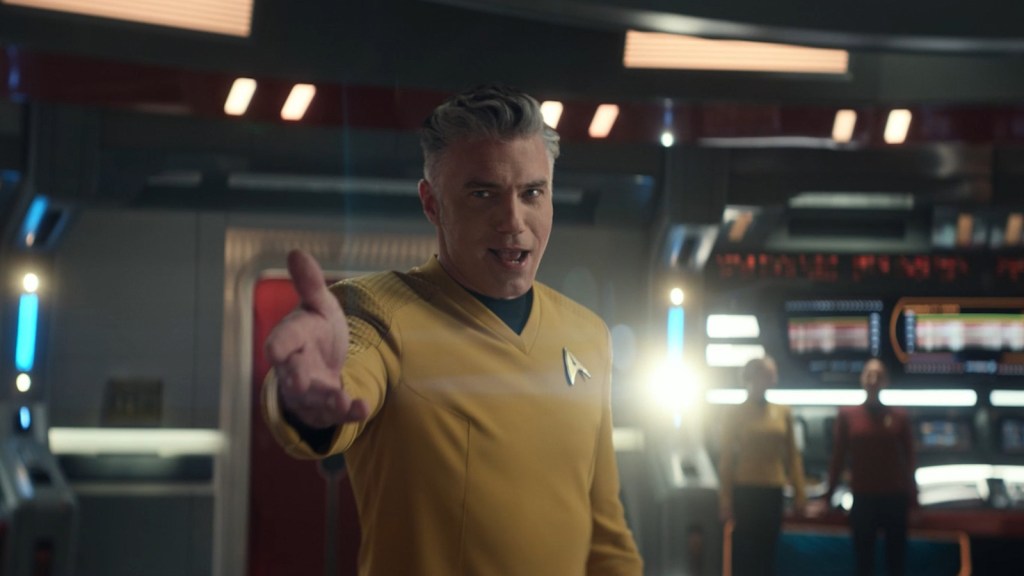
On a purely technical level, “Subspace Rhapsody” is a showcase for an incredibly talented ensemble cast. It’s obvious that a lot of the series regulars have some experience with the form. Christine Chong has talked about how it “was always (her) dream to do musical theatre.” Rebecca Romijn starred in The Producers opposite Richard Kind at the Hollywood Bowl. Before joining Strange New Worlds, Celia Rose Gooding broke out performing the Alanis Morissette musical Jagged Little Pill.
More than that, Star Trek should be doing more stuff like this. It is a gigantic multimedia franchise with a built-in fan base and high production values, with Nicole Clemens, president of original scripted series at Paramount+, talking openly about wanting an “always on slate.” With that level of creative freedom and that volume of content, there is absolutely no reason for Star Trek to be as aesthetically conservative as it has been over the past few years.
Fans and critics have been quick to praise Strange New Worlds as “a return to an episodic vision,” but the show has failed to take advantage of that. The beauty of the episodic television model was the freedom that it afforded for experimentation. To pick a random example, The X-Files could do a black-and-white creature feature in “The Post-Modern Prometheus,” a found-footage crossover with Cops in “X-Cops,” and a series of long-take sequences broken up by commercial breaks in “Triangle.”
Star Trek should be willing to play with its form. Strange New Worlds should be willing to be both strange and new. With the move to digital cameras and with no commercial breaks on streaming, why not do an episode in a single extended take? What about an episode in the “screenlife” style? Strange New Worlds should be taking full advantage of the opportunities presented by the episodic model, where every installment is a chance to do something exciting and interesting.
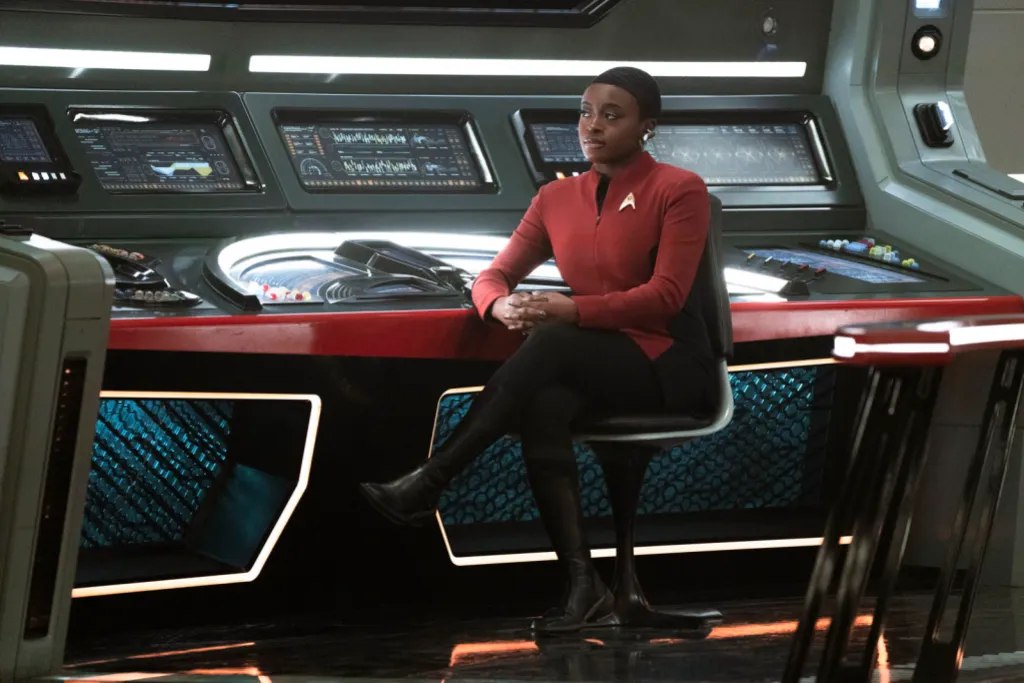
In that sense, both “Those Old Scientists” and “Subspace Rhapsody” are welcome additions to the Star Trek canon, in that they push the limits of what is possible within the established Star Trek format. “Those Old Scientists” proves that it is possible to blend animation and live action in a single Star Trek episode. “Subspace Rhapsody” proves that the production team can stage what is effectively an hour-long musical. That is commendable.
At the same time, it is frustrating to watch “Subspace Rhapsody” and wish that it was… well, better. As with “Those Old Scientists,” the episode is so thrilled to be playing with a new set of toys that it fails to really build a compelling narrative around them. There is no sense of stakes. There is no sense of momentum. There are some vaguely interesting thematic dynamics at play, but even those end up muddled at the end.
“Subspace Rhapsody” is a relationship episode. The character arcs running through “Subspace Rhapsody” focus on three potential couples: Captain Pike (Anson Mount) and Captain Batel (Melanie Scrofano), Lieutenant Spock (Ethan Peck) and Nurse Chapel (Jess Bush), Lieutenant Noonien-Singh (Christina Chong) and Lieutenant Kirk (Paul Wesley). However, it’s frustrating that the episode ultimately shelves two of these three relationships.
To be fair, this is an issue with both the episodic format and the prequel nature of Strange New Worlds. Without long-form serialization, it’s not really possible to watch relationships grow and develop as they did with characters like Sisko (Avery Brooks) and Yates (Penny Johnson Jerald), Kira (Nana Visitor) and Odo (René Auberjonois), or Worf (Michael Dorn) and Dax (Terry Farrell) on Star Trek: Deep Space Nine. If each story has to be self-contained, the characters cannot truly change between installments.
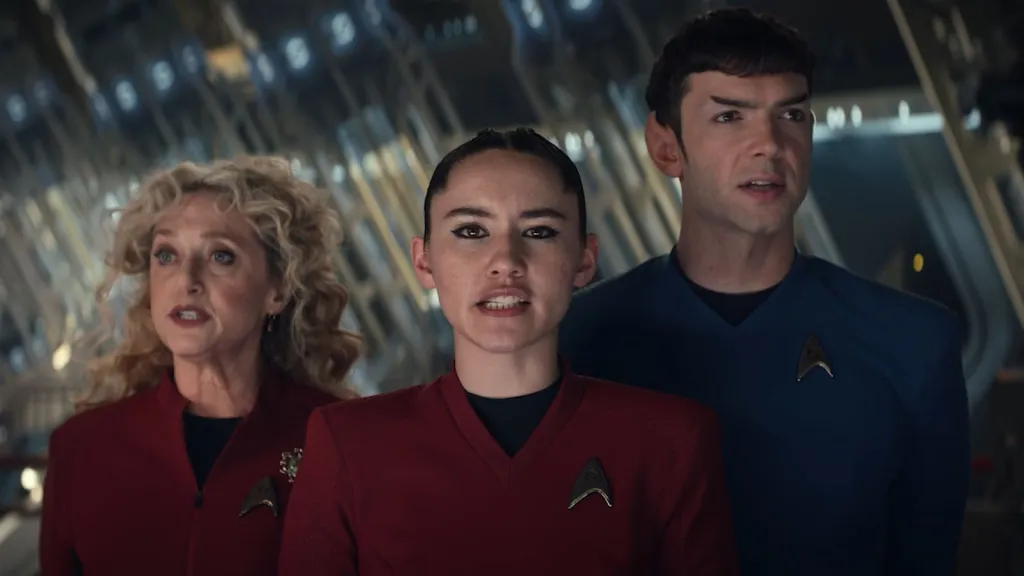
Similarly, most of the key characters in Strange New Worlds already have a predetermined path through the established canon. Based on their knowledge of existing Star Trek media, fans know that Spock and Chapel or Kirk and Noonien-Singh cannot end up together. This has the effect of undermining any attempt to wring drama from their interpersonal relationships. More than that, it makes the choice seem deeply cynical, an attempt to get the audience to invest in an impossibility. It feels like a waste of everybody’s time.
As such, “Subspace Rhapsody” literally makes a song and dance about two relationships that cannot go anywhere. The “will they / won’t they?” dynamic between Noonien-Singh and Kirk that was first teased only a few episodes ago in “Tomorrow and Tomorrow and Tomorrow” ends in a simple “they won’t.” The Spock and Chapel romance that only began at the end of “Charades,” four episodes ago, is cut short as it would always have to be.
The only real character development that comes from “Subspace Rhapsody” is that Pike and Batel are pretty much in the exact same place that they were at the end of “Among the Lotus Eaters.” They are in a relationship, but not so committed that it will meaningfully impact the show, as Batel is on another ship. There is nothing wrong with Star Trek asking its audience to embrace interpersonal dynamics, but those dynamics must actually have weight. Otherwise, it feels like watching pieces being shuffled aimlessly around a board.
This is where the themes of “Subspace Rhapsody” get a little muddled. One of the more interesting aspects of Strange New Worlds is its recurring fascination with the idea of gender and performance. This is most obvious with Spock, particularly in episodes like “Spock Amok” and “The Serene Squall.” The show returns time and again to the idea of gendered archetypes and the idea of heterosexuality as a sort of performance. “Ad Astra Per Aspera” and “Charades” are both episodes about “passing.”
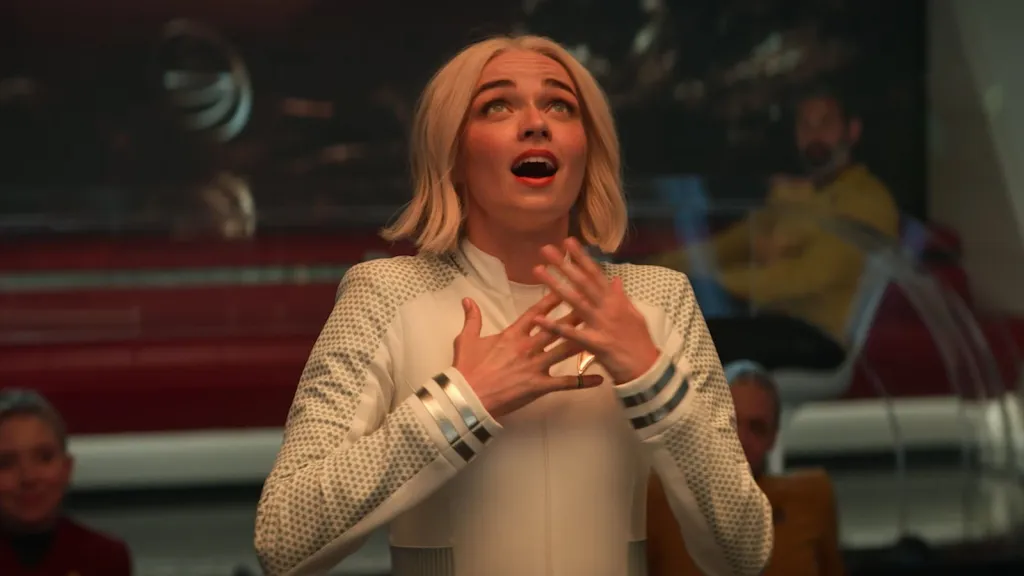
Whether fairly or not, stage musicals and pop music are not seen as stereotypically or conventionally heteronormative masculine spaces. As Kelly Kessler argued, “The performance of song and dance – as well as musical theatre – culturally has been associated with non-hegemonic or queered masculinity.” It is such an accepted cliché that Neil Patrick Harris famously opened the 2011 Tony Awards by jokingly assuring straight audiences that Broadway is “not just for gays anymore.”
“Subspace Rhapsody” is obviously playing with this. A subspace fold prompts big musical numbers, and those songs find characters expressing their emotional inner lives. The crew find that emotional openness to be an existential threat. “Lieutenant, are you telling us that our emotions constitute a security threat?” Pike asks Noonien-Singh incredulously early in the episode. However, after performing his own musical number to Batel, Pike seems to agree. “The subspace fold, I think we should blow it up,” he states bluntly.
Obviously, it is not only male characters affected – Noonien-Singh is among those most horrified at the thought of being rendered emotionally vulnerable. However, it does tie into longstanding tensions about how men are socialized to repress their emotions. After all, the episode’s stakes only really escalate when the stereotypically macho Klingons are affected. One of the episode’s best gags features a deeply humiliated Klingon boy band, with the Empire vowing to destroy “the abominable source of our dishonor.”
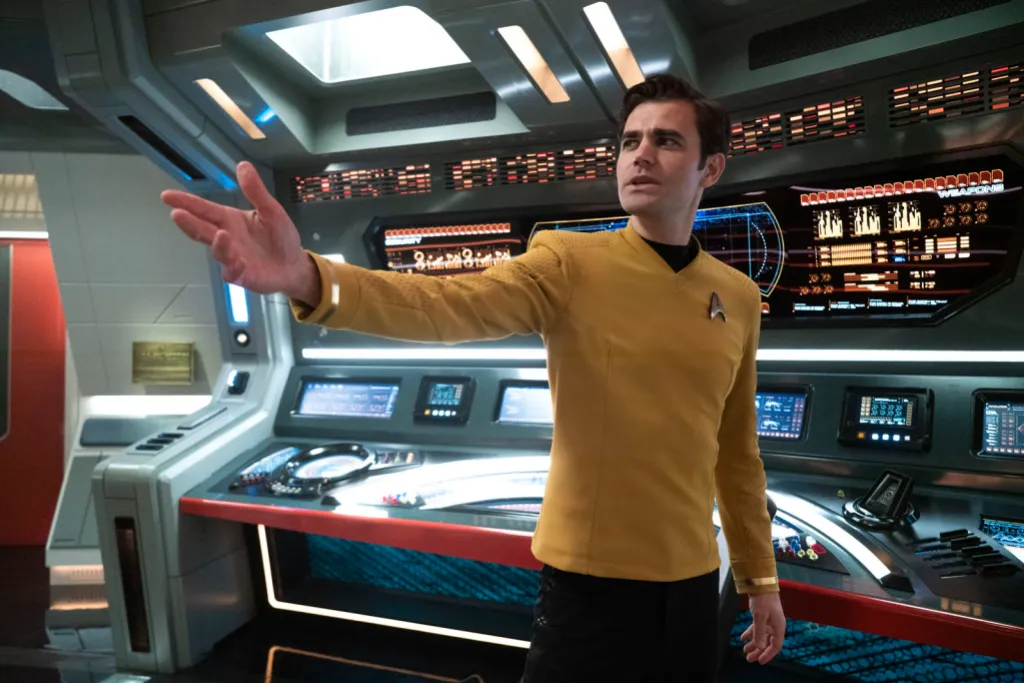
It’s clever and well intentioned, but it is also shallow. As with so much of the show’s interrogation and subversion of gender roles, there’s a lack of diversity of perspective. All three primary couples in the episode are heterosexual, with no queer perspectives represented in what has traditionally been seen — as James Lovelock points out — as “a safe ‘queer space’.” More than that, the episode ends with the rift closed. Spock goes back to being his stoic and repressed self, with no sense that he has grown or learned anything.
It’s easier to appreciate “Subspace Rhapsody” as pure spectacle. There is a lot of fun to be had in rhyming technobabble — “inertia dampeners” with “hampered,” “your last breath” with “mek’leth.” The choreography makes impressive use of the show’s sets, with Chapel getting a big crowd number in the crew lounge and Spock using the safety railing in engineering like a balcony. Indeed, there’s something charming in the Enterprise and Klingon ships literally dancing in space like they’re in a Busby Berkeley number.
“Subspace Rhapsody” is an episode that it’s easier to admire than to enjoy. It’s a pleasant enough tune, but it’s not a showstopping success.

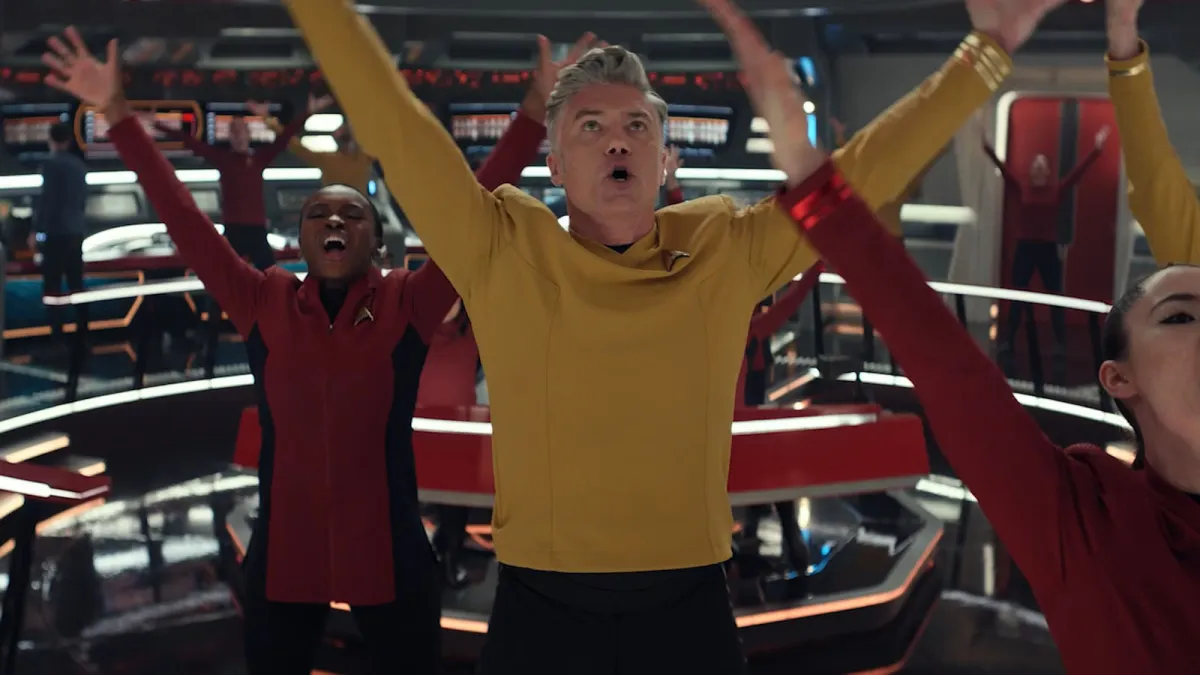




Published: Aug 3, 2023 11:00 am